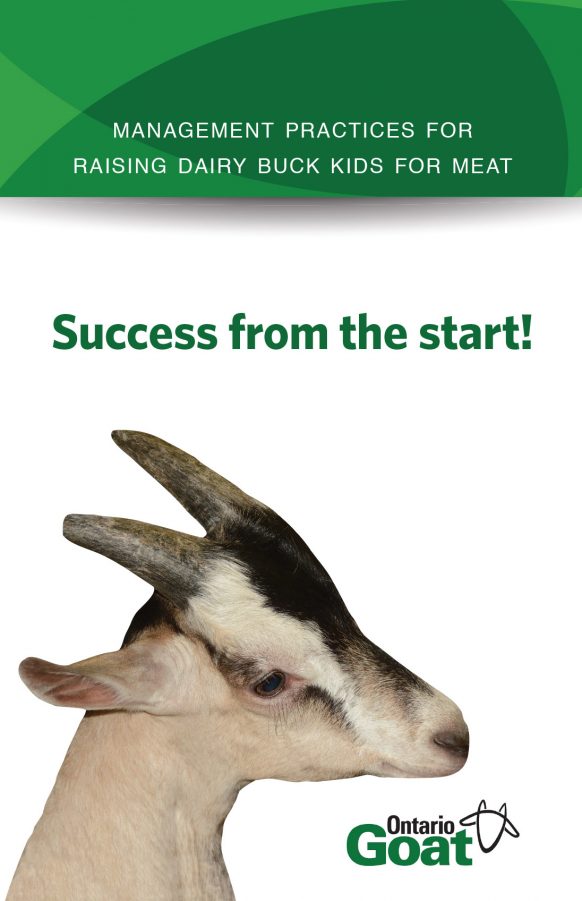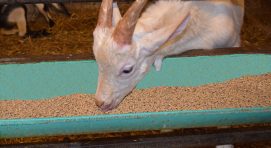This is a summary of Ontario Goat’s “Success from the start: management Practices for raising dairy buck kids for meat.”
Dairy buck kids raised for the meat market may help to meet the increasing demand for goat meat and increase revenue streams for dairy goat producers.
Note: Producers that raise their own kids or source kids directly from their farm of birth have a lower risk of disease than kids purchased from multiple sources. A close relationship with the supplier and avoiding purchasing kids through a third party also lowers disease risk. Kids should not be transported until they are at least eight days of age and have a healed navel.
Colostrum management
The producer at the birth farm must ensure colostrum is fed to all kids when they are born. The buyer should ask the supplier about the farm’s colostrum feeding routine. A three kilogram kid needs 150 mL of colostrum within the first hour of life, and no later than six hours after birth.
Newborn kid management
Navels should be dipped with dilute iodine at birth for disinfection; all kids must be identified before leaving the birth farm and receive proper a vitamin E and selenium injection if needed.
Housing
Housing requirements for rearing productive buck kids include maintaining temperature, ventilation, relative humidity, lighting, clean and dry bedding, feed and water, and adequate space.
Feeding pre-weaning
Feed fresh or acidified whole milk or milk replacer following colostrum and transition milk feeding. Clean, fresh, and free choice water should be provided at all times. Free-choice hay and a balanced grain ration should be provided within the first week of life.
Cleaning of feeding equipment
Nipples, milk tubes, bottles, buckets, and tanks should be cleaned and sanitized daily. The amount of bacteria on equipment can double every 20 minutes. Bacterial growth in feeding equipment can lead to severe illness and death in kids.
 Feeding post-weaning
Feeding post-weaning
It is essential to work with a nutritionist to ensure proper nutrition while minimizing the risk of kids developing diet-related diseases. A grain based pelleted feed and supplemental hay is standard.
Vaccinations and treatments
There are no licenced products in Canada for goats; therefore any treatments administered to the kids must be done in consultation with a licenced veterinarian. Common diseases in buck kids are neonatal diarrhea (scours), pneumonia, clostridial diseases, coccidiosis, parasites, and urinary calculi (stones). A Veterinarian-Client-Patient-Relationship (VCPR) is essential to raising healthy buck kids. Consult your herd veterinarian for guidance on preventing and treating these health problems.
Summary
With careful planning, preparation, and guidance from your veterinarian, raising dairy buck kids for meat can be a great source of income, both for dairy producers who want to raise their own buck kids and for those who are only raising buck kids. As the demand of goat meat continues to outpace production, there is no better time to start raising dairy buck kids for meat.
For more information on raising buck kids refer to:
